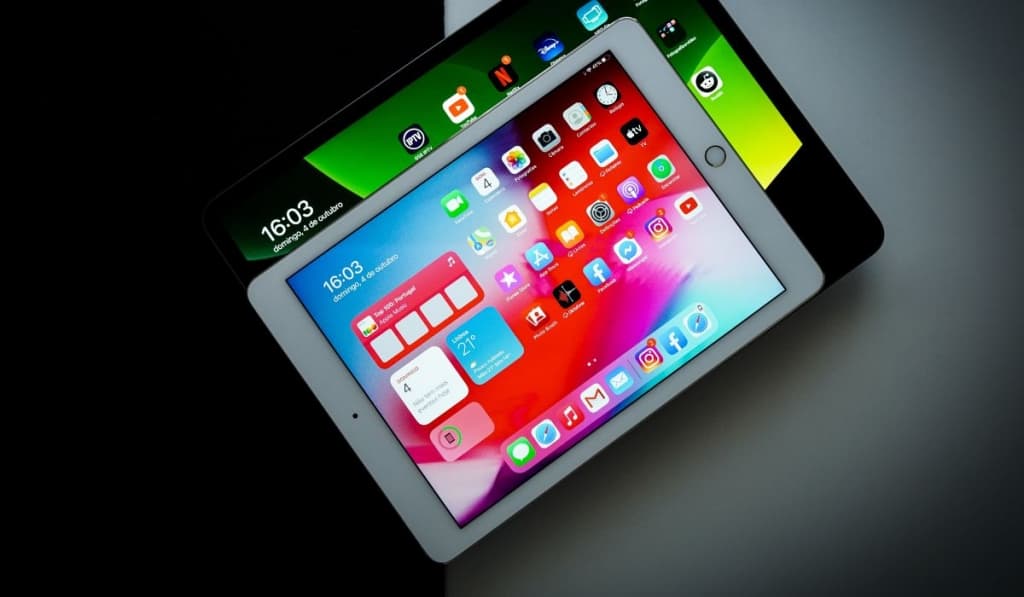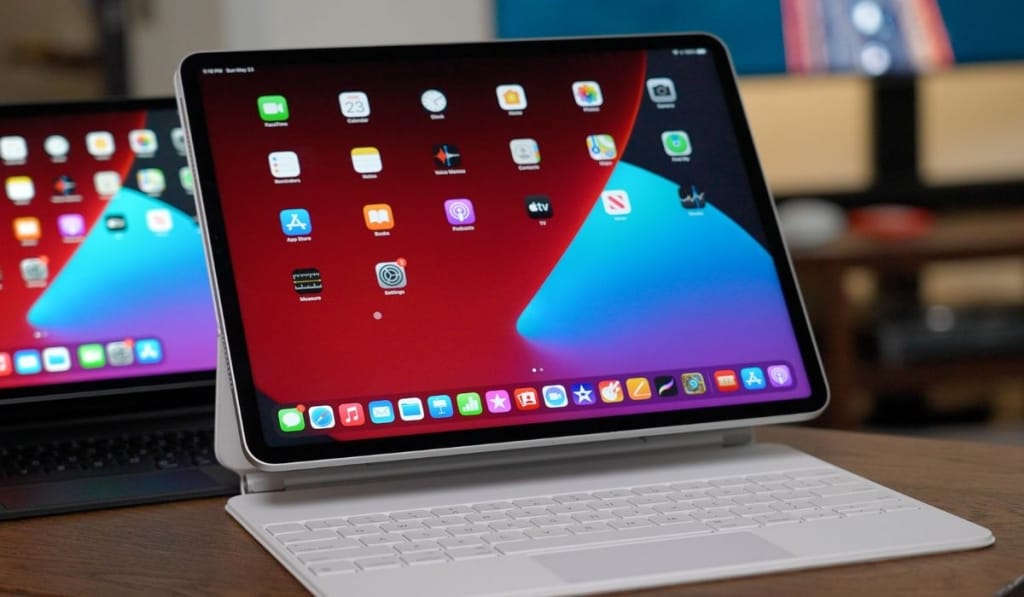How To Detect A Virus On Your iPad
It’s true that iPads have a significantly less chance of being affected by viruses and malware than many other devices. The iOS ecosystem is closely supervised, and third-party apps don’t make it to the App Store until they’ve been vetted and approved. But no device is completely safe, so how do you know if your iPad has been infected?
Signs that your iPad might have a virus include the appearance of apps you didn’t download, apps crashing unexpectedly, an increased number of pop-ups, and unusually high data usage. Restarting, clearing the browsing history, and restoring to a backup can help get rid of a virus.
Although the chances of a virus affecting your iPad are very low, it’s always best to be diligent while surfing the internet to protect your device from security risks. Let’s look at how you can scan your iPad for viruses and what measures can help you protect your iPad from viruses and malware.
Can iPads Get Viruses?

The chances of your iPad becoming infected with a virus are very slim unless you’ve jailbroken your device, leaving it vulnerable. However, malware hazards, like spyware, still exist.
For example, you might fall victim to a phishing scam that tricks you into divulging information such as accout names and passwords.
Can You Scan an iPad for Viruses?
If your iPad has a virus, it’ll behave differently from normal. Look out for the following symptoms of iPad viruses and other malware:
- Foreign Apps: If you see apps on your iPad that weren’t pre-installed, or that you didn’t download yourself, then this could be a sign of iPad malware or virus.
- Apps Crashing Unexpectedly: Are the apps on your iPad crashing or freezing frequently without any clear or valid reason? This could be another sign of malware on your iPad. Try updating the app and if that doesn’t work, launch a malware removal app to scan your iPhone for viruses.
- Unexplained Changes on Your Account: This is also another important indication that your iPad has been hijacked by malware.
- Increased Number of Pop-Ups: Receiving an increased number of pop-up boxes when using Safari or another browser is also a sign that things aren’t well with your iPad. Pop-ups can be a way of tricking you into agreeing to something that isn’t clearly mentioned. If you feel that something’s amiss, run an iPad virus scan.
- High Data Usage: Malware like spyware transmits data from your iPad. If you notice an increase in data usage, then it’s probably a virus on your iPad that’s responsible for it.
- Your iPad Is Jailbroken: Removing Apple’s security restrictions from your iOS device to install unapproved apps is called jailbreaking. This process greatly increases the risk of a malware infection.
- iPad Getting Too Hot: Malicious apps can be taxing for your iPad. They make your iPad work harder, which raises its temperature. Regularly check for viruses and keep your device cool.
- Reduced Battery Life: Malware apps consume excessive processing power, which can drain battery life. If you find your iPad running out of battery fairly quickly, try rebooting it. Be sure to run a virus scan if that doesn’t help.
How to Prevent Your iPad From Getting a Virus
An iPad is one of the safest devices when it comes to viruses and malware, but they’re still susceptible to attacks.
Nonetheless, with the help of the following measures, you can protect your iPad from falling victim to such hazards.
Update to the Latest iOS
Malware typically depends on vulnerabilities present in outdated versions of iOS. The good news is that when Apple releases an iOS update, it includes security fixes that make your devices more secure.
Be sure to update your iPad regularly to remove viruses that may be infecting it and close the security holes. Here’s how you can do that:
- Go to the ‘Settings’ app.
- Select ‘General.’
- Open ‘Software Update.’
- Tap on ‘Download and Install.’
Follow the instructions on your iPad screen to complete the download. Your iPad now supports the latest iOS version.
Don’t Open Strange Links
Never open or download attachments that you aren’t expecting to receive. Whether you get them by SMS, email, or from a secure messaging app, unknown attachments tend to be malicious. They can steal your data and infect your iPad with malware.
Don’t Jailbreak Your iPad
Jailbreaking gives you unlimited access to your iPad and allows you to customize it beyond its default options. It also allows you to install apps that aren’t available on the App Store.
However, jailbreaking isn’t recommended on iOS devices, as it removes the built-in security measures provided by Apple. So, if you’ve decided to jailbreak your iPad, remember that doing so leaves your device vulnerable to malware, and be very careful with your device.
How to Clear a Virus From Your iPad
Using strong and effective security measures helps to defend your iPad against threats from viruses and malware. However, if you feel that your device has been affected, then try the following to get rid of the malware and virus hazard:
Restart Your iPad
Restarting your iPad is the easiest way to get rid of your iPad virus. For this, you need to:
- Hold the power button until you see the ‘Slide to power off’ option.
- Slide it to the right to turn off your device.
- Press and hold the Power button until the Apple logo appears to turn your iPad back on.
Clear Your iPad’s Data and Browsing History
If restarting doesn’t help, then try cleaning your iPad’s data and history from your browser. Here’s what you need to do to delete your iPad’s browsing data on Safari:
- Go to ‘Settings.’
- Tap on ‘Safari.’
- Select ‘Clear History and Website Data.’
- Now choose ‘Clear History and Data.’
Your iPad may have picked up a virus if you visited an infected website or clicked on a malicious link. By clearing your iPad’s browsing history, you can get rid of some iPad malware.
Restore Your iPad to a Recent Backup
Restoring your iPad to a backup you made before you started having problems with your device is another way to get rid of your iPad virus.
You can restore your iPad from a backup stored on iCloud or one on your computer. If you want to restore your iPad to a version saved on your computer, you’ll need to go through iTunes; however, if you want to restore it using iCloud, then first make sure that the feature is turned on.
Here’s what you need to do to restore your iPad to a previous backup version using iCloud:
- Open the ‘Settings’ menu.
- Select ‘General.’
- Scroll down and choose ‘Transfer or Reset iPad.’
- Tap on ‘Erase All Content and Settings.’
- If you want to make a last-minute iCloud backup, then tap on the ‘Backup Then Erase’ option in the pop-up window. If not, then choose ‘Erase Now.’ Follow the on-screen instructions to complete the procedure.
- Once the ‘Apps & Data’ tab is open, tap on ‘Restore from iCloud Backup’. Your iPad will ask you to sign in to iCloud. Now choose the iCloud backup you want to use.
Factory Reset Your iPad

If none of the above measures work, then you’ll need to completely erase the contents of your iPad and reset it to remove the virus.
A factory reset will restore your iPad to a like-new state by removing all your configurations and settings and installing the latest iOS version on your device.